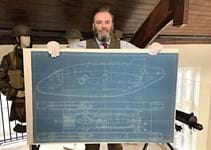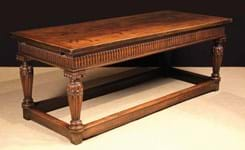
'Tipperary, 1914' by Walter Sickert was exhibited by The Fine Art Society and is now set to go on display after being acquired by the Imperial War Museum.
Photo courtesy of the Imperial War Museum
Tipperary, 1914, an oil on canvas signed and dated by Sickert, had featured in the Twenty Twenty exhibition in 2020 at The Fine Art Society of London and Edinburgh. It was purchased last year by the IWM with the help of the Art Fund and the National Heritage Lottery Fund (NHLF) for a total cost of £115,000.
Sickert painted four versions of Tipperary, with this 20 x 16in (51 x 40.5cm) example the only one to feature a soldier (a version held by the Tate depicts just a woman playing the piano, for example). The title is a reference to the 1912 song It’s a Long Way to Tipperary that then achieved lasting fame during the war.
A letter identifies the model for Tipperary as ‘Chicken’ (real name Emily Powell), a chorus girl at the Royal Opera House who Sickert regularly employed as a model. The painting previously sold at Sotheby’s in 1969 and Christie’s in 1997.
Patriotic feeling
The NHLF said: “It captures public feeling in the UK at the time of its creation: patriotic, supportive of military action, optimistic that the First World War would be short and Britain and its allies victorious. It is a rare artistic portrayal of this public mood – very few artists of Sickert’s standing broached the subject of the war at this time. Artistic sentiment would later reflect the war’s catastrophic loss of life.
“It’s a Long Way to Tipperary, first adopted by the 7th Battalion of the Connaught Rangers, quickly became a favourite marching tune throughout the armed forces at the front, probably because of its jaunty melody, the references in the lyrics to familiar London place names, and the song’s sentiment of being far from home and loved ones.”
Sickert was born in Munich but his family moved to England in 1868. London remained his principal home. At the outbreak of war, he was compelled to get proof of his Danish father’s naturalisation from the Home Office to avoid being monitored or interned as a foreigner.














